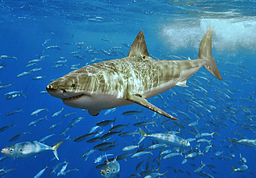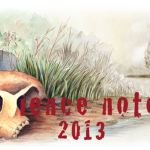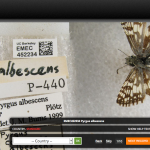Last month, I wrote my first newspaper science story for the Santa Cruz Sentinel on a new paper about the diet of great white sharks.
I wrote about the study’s analysis of stable isotopes in shark vertebrae as a record of a shark’s diet throughout its life. The researchers assumed they’d see the isotopic signature of mostly seals and sea lions in adult shark vertebrae. Instead they found that sharks may be eating dolphins, tuna and squid.
If you’d asked me what the story was about, I would’ve repeated the first sentence of the article. Great white sharks have a surprisingly varied diet.
I presented the premise, the methods, and the results. I thought I put together an alright story.
But, as gauged by the reader comments, I failed to convey the newsworthiness of the findings.
“What animal doesn’t adjust its diet based on the available prey?”
“I don’t care what they eat…as long as it isn’t me.”
“Sooo they eat what’s available and proportionate to their size? Fascinating.”
Apparently something was missing. These readers hadn’t seen why this study mattered to scientists. It bugged me. So I called shark expert Chris Lowe, at Cal State Long Beach, to get another perspective.
Lowe said that, yes, historically scientists have assumed that adult great white sharks eat primarily marine mammals, based only on observations of sharks along the coast. He said these calorie-rich mammals make a rewarding meal for sharks.
In the last 20 years though, Lowe said, we’ve learned that white sharks spend much of the year migrating through the Pacific Ocean. It’s harder to watch a shark eating in the open ocean than in a seal rookery. New technology, like the “Crittercam,” helps scientists understand what sharks do and what they eat during these long migrations, away from coastal marine mammal habitats. “We’re seeing that adults have no qualms about eating a 10-inch fish,” Lowe said. “A meal is a meal.”
The sharks’ behavior isn’t surprising, but the new paper is good evidence of it. “This paper suggests that more of them are eating other things than we previously thought,” Lowe said.
Lowe helped me understand the significance of the science. But how do I communicate that? I asked veteran science journalist Paul Rogers of the San Jose Mercury News for some tips. He said I need to ask myself a few questions:
“1) What is this story about? You have to be able to answer that question in one sentence. If you can’t, your ideas aren’t organized enough to write.
”2) Why does my grandmother care? If you can’t explain why a story matters to readers, it may not be a story,” he said.
I was on the right track. But if I could do another draft, I’d say that great white sharks have a secret life that scientists had no way of observing for years. Now, with this new research, we’re seeing a hint of that life in the record built into sharks’ very bones (or cartilage). They have favorite foods. And one shark’s favorites can be different from another’s, even when the sharks live in the same waters.
I think both of my grandmothers would get a kick out of the image of sharks sidling up to a buffet and filling their plates with their favorite foods.








Comments are closed.